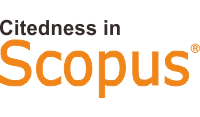The Influence of Digital Marketing and Brand Image to Build Interest in Visiting Tourists in the Recovery of the Tourism Sector
DOI:
https://doi.org/10.35313/jtospolban.v3i1.69Keywords:
Digital Marketing, Brand Image, Visiting Interest, Tourism Sector RecoveryAbstract
The tourism sector is currently facing a post-COVID-19 recovery process. Marketing played an important role in the recovery of this tourism sector. Both tourist attractions and the government have started to move again to find the right strategy in marketing. This study aims to analyze the role of digital marketing and brand image in the interest of visiting tourists as part of the recovery of the tourism sector. Data were collected at The Lodge Maribaya as a research locus by interviewing 123 tourists who visited tourist attractions through a questionnaire instrument. By using scoring and path analysis, it is found that Digital Marketing significantly influences Brand Image. Apart from that, digital marketing and brand image also significantly affect tourist interest in visiting. This shows that digital marketing and brand image can be an effective marketing strategy in the context of recovering the tourism sector.
References
Andrianto, T., Kusumah, A. H. G., Rashid, N. A. M., Buja, A. G., & Arshad, M. A. (2021). Covid 19, technology and tourism - The future of Virtual Tour. In A. H. G. Kusumah, C. U. Abdullah, D. Turgarini, M. Ruhimat, O. Ridwanudin, & Y. Yuniawati (Eds.), Promoting Creative Tourism: Current Issues in Tourism Research. Routledge. https://doi.org/10.1201/9781003095484
Armstrong, G., Kotler, P., Trifts, V., Buchwitz, L. A., & Gaudet, D. (2017). Marketing An Introduction. Pearson.
Avraham, E. (2021). Recovery strategies and marketing campaigns for global destinations in response to the Covid-19 tourism crisis. Asia Pacific Journal of Tourism Research, 26(11), 1255–1269. https://doi.org/10.1080/10941665.2021.1918192
Farkhondehzadeh, A., Karim, M. R. R., Roshanfekr, M., Aziz, J., & Hatami, F. L. (2013). E-Tourism: The role of ICT in tourism industry. European Online Journal of Natural and Social Sciences, 2(3), 566–573.
Gössling, T., Scott, D., & Michael, C. H. (2020). Pandemics, tourism and global change: a rapid assessment of COVID-19. Journal of Sustainable Tourism. https://doi.org/10.1080/09669582.2020.1758708
Hidayat, K. (2021). Dampak Pandemi, Kadin: Kerugian Sektor Pariwisata Rp 10 T Selama 202.
Holliman, G., & Rowley, J. (2014). Business to business digital content marketing: marketers' perceptions of best practice. Journal of Research in Interactive Marketing, 8(4), 269–293. https://doi.org/10.1108/JRIM-02-2014-0013
Hong, Y., Cai, G., Mo, Z., Gao, W., Xu, L., Jiang, Y., & Jiang, J. (2020). The Impact of COVID-19 on Tourist Satisfaction with B& B in Zhejiang, China: An Importance–Performance Analysis. 17(10), 3747. https://www.mdpi.com/1660-4601/17/10/3747
Jonas, Al., & Mansfeld, Y. (2015). Exploring the interplay between the use of risk-related information, risk perception formation, and the stages of travel product consumption. Current Issues in Tourism. https://doi.org/http://dx.doi.org/10.1080/13683500.2015.1024104
Kartajaya, H., Kotler, P., & Hooi, D. H. (2019). Marketing 4.0: Moving From Traditional To Digital. In Asian Competitors Marketing for Competitiveness in the Age of Digital Consumers. World Scientific Publishing Co. Pte. Ltd. https://ideas.repec.org/h/wsi/wschap/9789813275478_0004.html
Khamis, S., Ang, L., & Welling, R. (2017). Self-branding, 'micro-celebrity' and the rise of Social Media Influencers. Celebrity Studies, 8(2), 191–208. https://doi.org/10.1080/19392397.2016.1218292
Khazami, N., Lakner, Z., & Nefz, A. (2020). Pandemic and tourism: Re-preparation of tourism post COVID- 19. Journal of Hotel and Business Management, 9, 1–5. https://doi.org/10.35248/2169-0286.20.9.198
Ki, C.-W., Cuevas, L. M., Chong, S. M., & Lim, H. (2020). Influencer marketing: Social media influencers as human brands attaching to followers and yielding positive marketing results by fulfilling needs. Journal of Retailing and Consumer Services, 55, 102133. https://doi.org/https://doi.org/10.1016/j.jretconser.2020.102133
Kotler, P., & Keller, K. L. (2012). Marketing management (14th ed.). Pretince Hall.
Leung, D., Law, R., van Hoof, H., & Buhalis, D. (2013). Social Media in Tourism and Hospitality: A Literature Review. Journal of Travel & Tourism Marketing, 30(1–2), 3–22. https://doi.org/10.1080/10548408.2013.750919
Lim, W. M. (2021). Conditional recipes for predicting impacts and prescribing solutions for externalities: the case of COVID-19 and tourism. Tourism Recreation Research, 46(2), 314–318. https://doi.org/10.1080/02508281.2021.1881708
Magno, F., & Cassia, F. (2018). The impact of social media influencers in tourism. Anatolia, 29(2), 288–290. https://doi.org/10.1080/13032917.2018.1476981
Morrison, A. M. (2019). Marketing and Managing Tourism Destinations (Second Edi). Routledge.
Nowacki, M. M. (2009). Quality of visitor attractions, satisfaction, benefits and behavioural intentions of visitors: verification of a model. International Journal of Tourism Research, 11(3), 297–309. https://doi.org/10.1002/jtr.689
Novianti, S., Susanto, E., & Rafdinal, W. (2022). Predicting Tourists’ Behaviour Towards Smart Tourism: The Case in Emerging Smart Destinations. Journal of Tourism Sustainability, 2(1), 19–30. https://doi.org/10.35313/jtospolban.v2i1.30
Putri, L. N., Sutadji, D. S., & Susanto, E. (2019). E-Catalogue Pola Perjalanan Wisata Bahari Di Kawasan Wisata Pulau Pisang Dan Labuhan Jukung, Kabupaten Pesisir Barat, Provinsi Lampung. Barista : Jurnal Kajian Bahasa Dan Pariwisata, 6(2), 66–78. https://doi.org/10.34013/barista.v6i2.183
Susanto, E., Hendrayati, H., Rahtomo, R. W., & Prawira, M. F. A. (2022). Adoption of Digital Payments for Travelers at Tourism Destinations. African Journal of Hospitality, Tourism and Leisure, 11(2), 741–753.
Swarbrooke, J., & Horner, S. (2007). Consumer Behaviour in Tourism. (2th ed).
UNWTO. (2020a). COVID-19: UNWTO calls on tourism to be part of recovery plans. https://www.unwto.org/news/ covid-19-unwto-calls-on-tourism-to-be-part-of-recovery-plans
UNWTO. (2020b). Impact of COVID-19 on global tourism made clear as UNWTO counts the cost of standstill. UNWTO Reports, JULY 2020, 33–34.
Xiang, Z., & Gretzel, U. (2010). Role of social media in online travel information search. Tourism Management, 179–188. https://doi.org/10.1016/j.tourman.2009.02.016
Yang, E. C. L., & Nair, V. (2014). Tourism at Risk: A Review of Risk and Perceived Risk in Tourism. Asia-Pacific Journal of Innovation in Hospitality and Tourism (APJIHT), 3(2). https://doi.org/10.7603/s40930-014-0013-z
Žabkar, V., Brenčič, M. M., & Dmitrović, T. (2010). Modelling perceived quality, visitor satisfaction and behavioural intentions at the destination level. Tourism Management, 31(4), 537–546. https://doi.org/http://dx.doi.org/10.1016/j.tourman.2009.06.005
Downloads
Published
Issue
Section
License
Copyright (c) 2023 Lilis Jayanti, Annisa Maharani Bella Pratiwi, Dita Aulia Rahma, Fernanda Kayisa Putri, Intan Shafa Sulistyo Aji, Purwita

This work is licensed under a Creative Commons Attribution 4.0 International License.



.png)
















